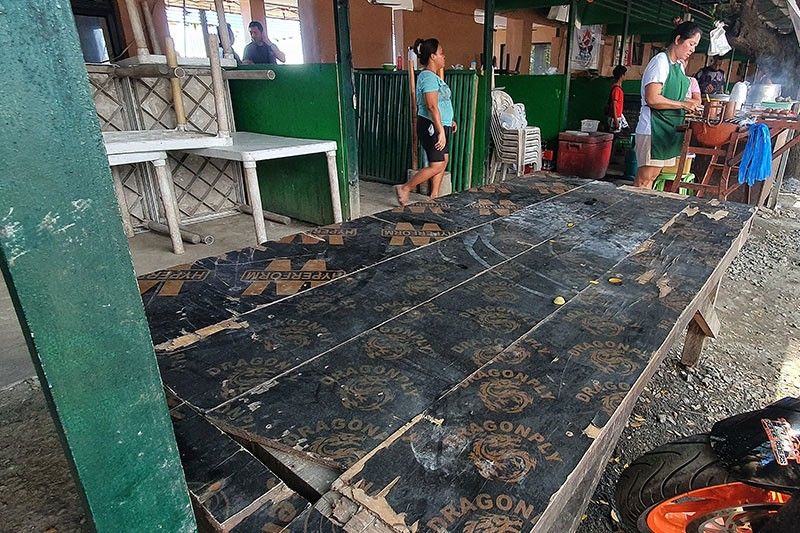After ASF confirmed in Cebu: Pork prices rise

CEBU, Philippines — Prices of pork and pork-related products at the Carbon Public Market, the biggest market in Cebu, have already increased by up to P20 to P30 following the confirmation of the African Swine Fever (ASF) cases in Carcar City.
Dr. Jessica Maribojoc, head of Cebu City's Department of Veterinary Medicine and Fisheries (DVMF), told reporters Thursday, March 9, that they noticed the price increase in their recent price monitoring at the Carbon market.
According to the price list, pork products such as pork chop range from P200 to P300 per kilo, pork loin from P240 to P320, thigh front from P160 to P250, and thigh rear from P160 to P230 per kilo.
The prices are relatively high compared to last February or a month before Cebu remained ASF-free, when pork chop prices ranged from P190 to P300 per kilo, pork loin from P220 to P260, thigh front from P130 to P150, and thigh rear from P130 to P150.
Maribojoc said they continue to implement strict borders, particularly within the southern part of Cebu through their borderlines in N. Bacalso Avenue in Barangay Bulacao; Laray, Inayawan; and at the South Road Properties.
Police Lt. Col. Mark Gifter Sucalit, deputy director for operations of the Cebu Police Provincial Office, said border control checkpoints are going on 24/7 similar to the situation at the very beginning of the COVID-19 pandemic in Cebu.
Maribojoc added that they instructed banning pork products from the ASF-infected, buffer, surveillance, and protected zones.
For now, she encouraged vendors to look for supply within the city and northern Cebu, including the province of Bohol.
Intensified inspection
Meanwhile, Dr. Alvin Leal, officer-in-charge regional technical director for the National Meat Inspection Service (NMIS), said they are strictly checking documents for the pork livestock coming into slaughterhouses.
He said there are out four credible double and triple A slaughterhouses in Cebu--Talisay City, Mandaue City, Cebu City, and Asturias.
Among the documents they would look into are a veterinary health certificate, certificate of ownership for large animals, and certificate of transportation, which are acquired through LGU veterinarians.
He warned hog raisers who would try to tamper with their documents to face penalties for violating Republic Act No. 9296 (The Meat Inspection Code of the Philippines) and 7394 (Consumer Act of the Philippines of 1991), among other laws.
Leal also assured consumers that they have personnel who would go around supermarkets, public markets, and meat shops to check their appropriate permits and see if they are selling meats safe for human consumption and safe from ASF and other animal diseases.
Vincoy clarified that ASF does not infect humans, but eating the infected pigs is still not allowed under the Meat Inspection Code.
Leal said he set to meet with all the respective slaughterhouse owners to disseminate accurate information and the situation of ASF in Cebu, particularly to spare them from receiving ASF-infected hogs.
He added they would discuss a uniform implementation of all Executive Orders (EOs) released by various chief executives in Cebu.
Zoning plan
Also, Thursday, Provincial Veterinarian Dr. Mary Rose Vincoy met with all Cebu local government unit (LGU) representatives at the Capitol to discuss the national zoning plan implemented for heightened ASF alert.
As shown in the plan, Carcar City remains the only one in the red zone or the infected zone.
Next are municipalities of Sibonga, Barili, San Fernando, and Aloguinsan in the buffer or nearest areas of the infected zone; surveillance or the yellow zone are Argao, Dumanjug, Ronda, Pinamungahan, Talisay and Naga City; and protected or yellow-green zone are Toledo City, Alcantara, Moalboal, Badian, Dalaguete, and the rest of the areas land in green or the free zones.
Vincoy explained the relevance of zoning to identify "spillovers" quickly or when some hogs from the infected zone by chance traverse the uninfected zones and to put the buffer zones under strict surveillance and timely gathering of blood samples for possible ASF detection. — Mitchelle L. Palaubsanon, Romeo D. Marantal (FREEMAN)
- Latest
























